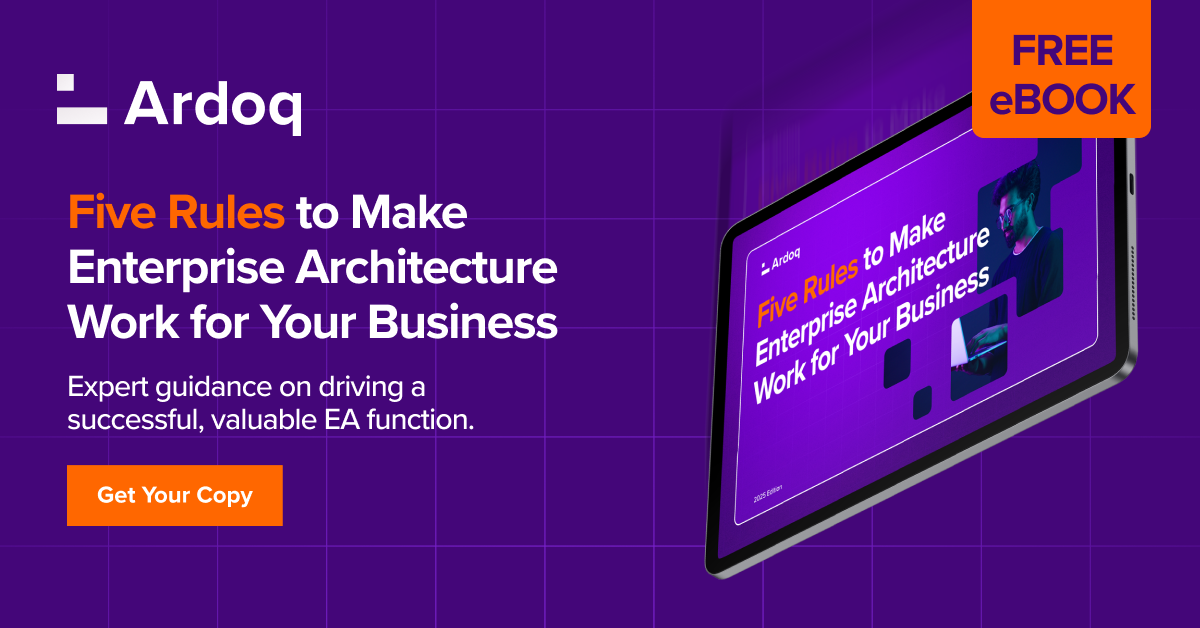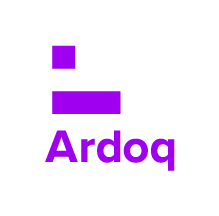Measuring the ROI of Your Enterprise Architecture Practice
The most effective way to prove ROI is by tying your EA initiatives directly to quantifiable business outcomes. Here’s a breakdown of the tangible and intangible value EA teams should be tracking:
Tangible Value: The Metrics that Matter
These are the hard numbers that speak to executives. They show a direct financial impact and are the most powerful way to prove the value of your work. The value of EA can be measured by its impact on key performance indicators (KPIs) such as:
- Reduced IT Costs: A well-governed EA practice can significantly lower spending. You can track this by measuring:
- Application Rationalization: How many redundant or unused applications have you identified and retired? Through rationalization, one of America’s largest bedding manufacturers Serta Simmons identified $5 million in cost savings. Learn more about how they uncovered real cost-saving opportunities across their sprawling technology landscape: How Serta Simmons Bedding Dreamt Big to Save $5M
- Vendor Consolidation: How many vendor contracts have you consolidated or eliminated by identifying overlaps?
- Infrastructure Optimization: How have EA insights led to more efficient use of your cloud or on-premise infrastructure?
- Increased Agility and Time-to-Market: In a fast-paced market, the ability to launch new products or services quickly is a significant competitive advantage. This could be measured in:
- Time Savings: Tracking the average time it takes to get from a business idea to a new application or service deployment.
- Project Success Rate: Monitoring the success rate of projects that have a clearly defined architectural roadmap.
Intangible Value: The Benefits that Build a Better Business
While these benefits are harder to put a dollar value on, they are the foundation of a resilient and competitive organization.
- Reduced Risk and Improved Compliance: By creating a single source of truth for your IT landscape, you can proactively identify security vulnerabilities, compliance risks, and technical debt. Track this by measuring:
- Reduced Security Incidents: A European state-owned railway leveraged EA to deliver real-time, role-specific insights that helped reduce and expedite emergency responses. See how they reduced risk by improving stakeholder engagement.
- Compliance Audit Success: The ease and speed with which your organization can pass a compliance audit. Leveraging a modern EA platform like Ardoq, a UK agency was able to meet their internal audit deadline for GIAA and the Freedom of Information Act in just six months. Learn more about how Ardoq is driving public sector transformation in the UK.
- Enhanced Decision-Making: When leaders can see the entire business ecosystem, they can make smarter decisions about investments, acquisitions, and strategic direction.
- Better Alignment: Victoria's Department of Families, Fairness and Housing (DFFH)’s EA team helped improve the visibility of complexity and strengthen strategic alignment by linking initiatives to measurable social outcomes.
- Faster Insights: A modern EA platform means moving away from high-risk manual documentation and leveraging data-driven dashboards that are kept automatically up to date. This allows decision-makers to understand and act on the reality of the organization instead of relying on gut-feel or outdated information.
The Tool: Your Most Powerful Ally in Proving ROI
An Enterprise Architect’s choice of platform is critical to how well they can communicate their value, collaborate with other teams, and advise the business. You can’t measure what you can’t see. Excel and manual diagramming tools aren’t enough to support the business with timely, reliable insights.
The Ardoq platform’s capabilities offer Enterprise Architects:
- One Source of Truth: A single, live model of your entire organization, so you can easily track and visualize the metrics that matter.
- Automated Insights: Speeding up the hard work of data collection and analysis, giving you the real-time insights you need to prove your value.
- Visualize the Impact: Instantly see or model the ripple effect of every decision on your IT landscape, making it simple to show key stakeholders exactly how your work is leading to cost savings, risk reduction, and increased agility.
By focusing on key business metrics and using the right tool to measure them, you can move your EA practice from an underappreciated cost center to a value creator and essential partner in driving the organization forward.
See how we are helping our customers achieve real value with their EA practice.
The Future of Enterprise Architecture
Enterprise Architecture isn't just surviving the era of AI, cloud computing, and relentless digital transformation—it's becoming the central driver. The old, static approach of documentation and diagrams simply can't keep up with a landscape that changes daily.
We see two major shifts defining the future of EA:
From Static Frameworks to Dynamic Tooling: Rigid, documentation-heavy frameworks are being replaced by modular, living architectures managed within a powerful EA tool. This shift allows organizations to scale quickly, optimize resources, and drive innovation at unprecedented speed. The EA practice becomes the connective tissue that ensures coherence, security, and long-term sustainability.
EA as an Intelligence and Context Hub: AI is amplifying EA's value by turning collected data into strategic intelligence. The structure provided by EA is essential to integrating intelligent technologies seamlessly and making the most of AI’s capabilities.
In this new reality, EA serves as a guiding force. It’s shifting from a compliance checklist to a continuous process that connects every technology investment directly to a measurable business outcome. Far from being a static discipline, EA is evolving as the essential strategic function that keeps businesses resilient, competitive, and future-ready.
Learn more about AI Lens, Ardoq’s solution for effective AI governance, preempting shadow AI, wasted spend, and hidden risks.
FAQs About the Value of Enterprise Architecture
What Is the Main Purpose of Enterprise Architecture?
To align IT with business strategy, ensuring technology investments support organizational goals and drive value. It provides a holistic view of the organization, facilitating better decision-making and increased efficiency.
What Are the Advantages of Enterprise Architecture?
There are numerous benefits for Enterprise Architecture but here are some of the top ones:
- Improved Decision-making: EA provides a clear understanding of the organization's IT landscape, enabling informed decisions about technology investments.
- Increased Efficiency: EA helps identify redundancies and optimize resource allocation, leading to cost savings and improved operational efficiency.
- Enhanced Agility: EA promotes standardization and integration, making it easier to adapt to change and implement new technologies.
- Reduced Risk: EA helps identify and mitigate risks associated with IT projects and changes.
What Are the Benefits of Enterprise Architecture Systems?
EA systems or platforms like Ardoq provide a centralized repository for EA information, facilitating collaboration, analysis, and planning. They automate tasks, improve data accuracy, and provide visualizations that aid in communication and understanding.
How Does Enterprise Architecture Align With and Support Business Strategy?
EA translates business goals into technology initiatives, ensuring that IT investments support strategic objectives. It provides a framework for prioritizing projects, allocating resources, and measuring the impact of technology on business outcomes.
How Do You Measure the Value of Enterprise Architecture?
The value of EA can be measured by its impact on key performance indicators (KPIs) such as:
- Reduced IT costs
- Improved operational efficiency
- Increased agility and speed to market
- Enhanced customer satisfaction
- Reduced risk and improved compliance
Who Is Responsible For Enterprise Architecture?
Responsibility for EA is a shared endeavor. While everyone in the organization plays a role in its success, leadership and guidance typically come from a dedicated team. This often includes the Chief Information Officer (CIO), experienced Enterprise Architects who drive the EA process, and an EA Steering Committee composed of key stakeholders. This collaborative group defines the Enterprise Architecture strategy, oversees its implementation, and ensures ongoing alignment with business goals.
- Blog Posts Data-Driven EA Eases Management of Application Ownership Top CIO Challenges: How Ardoq Helps You Stay Ahead
- Solutions Application Risk - Efficiently assess IT risks and ensure compliance. Strategy to Execution
- Guides Navigating Turbulent Times With Digital Business Optimization Emerging Technology Adoption Report 2024







/Logos/Ardoq/RGB_Ardoq_Logo_Stacked_White_Monochrome%201.png?width=80&height=77&name=RGB_Ardoq_Logo_Stacked_White_Monochrome%201.png)

